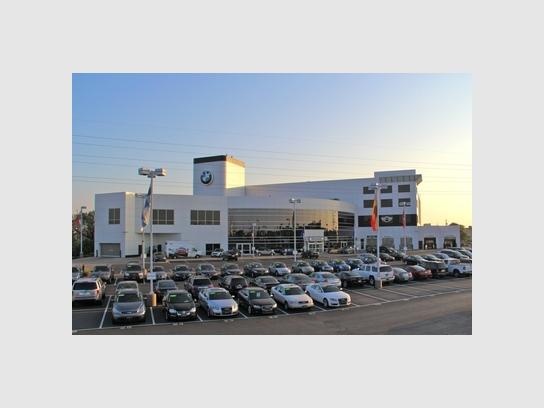Continue Reading Below
Engines
Editorial: Are you going to miss the “Big Six” engines?Andrew
April 15, 2011 / 3 minutes read
35 commentsIn the outset of this article – I know that this is a moot point but I will ask it anyway: Will you miss the big, naturally aspirated inline-six cylinder engines of BMW as we see the resurgence of the Turbo Era in road cars? It’s a moot point because, in my opinion, it looks like the forthcoming product line from BMW in the North American market will have no options for buyers to pick up a naturally aspirated inline six cylinder engine. It appears that literally every engine in BMW of North America’s line-up could be be powered via a forced induction engine and that’s a sad possible future to think about.
Why? The “big six” engines have had an incredibly important role in the history of the brand since the revitalizing of the car maker in the late 1960’s and early 1970’s under the direction of new CEO Eberhard von Kuehnheim. The first car to feature the big six was ironically nicknamed the “New Six Coupe”, part of the “Neue Klasse,” the E9 2800CS debuted in 1968 featuring a single overhead cam inline six cylinder engine producing roughly 170 Bavarian stallions under the freshly redone nose.
It would be the start of something spectacular. A trend that would carry on for another 43+ years: the placement of a naturally aspirated straight-six engine developed by and for BMW – the M30 was the first Big Six and started it all. The M30 would live on in the first full-sized BMW Coupe with the E9 and the first full-sized, modern BMW Sedan – the E3 – later to become the Bavaria in America and 3.0Si. The architecture of the engine, designed around a longer version of the venerable M10 4 cylinder engine found in the 2002, would go on to power the first 7 Series, the first 5 Series and the first 6 Series. A modified version of the M30(in M20 belt-driven guise) would also power the eventual bread-and-butter model of BMW: the first 3 Series.
Moving into the 1980’s, the E21 3 Series was replaced by the iconic E30 3 Series which would again be powered by a massaged inline-six cylinder engine. the most powerful motor was the 2,500cc in the standard 3 Series line-up. Even in the mid-to-late 1980’s at the height of turbocharging fever in production cars, BMW maintained mostly naturally aspirated engines, particularly big sixes, with the exceptions being turbo diesels and the turbocharged six cylinder 745i. By the 1990’s, there were no forced induction engines under the hood of any American market Bavarian hotrods. By this point, even Mercedes-Benz was beginning to head away from using the silky smooth straight sixes – BMW continued on undeterred. At least until 2006 when the N54B30 was introduced and by then, the writing was on the wall.
Power figures amongst the Germans continued to inch up with every new generation all while government emissions regulations followed suit. The silky, sonorous, naturally aspirated BMW sixes’ days were numbered. the N52 now looks to be the final iteration of the ubiquitous BMW 3.0 liter naturally aspirated inline-six – likely dying out through the change of the E90 to the F30 or the LCI of the F10 5 Series. In it’s place, an N55 and the all new N20 4 cylinder turbo – which sounds wonderful according to our own Hugo Becker.
I’m sad to see the legendary big sixes of BMW possibly evaporate from their line-up – its honestly my favorite feature of my E46. But then again, the E46 is a car from a very different time for BMW. In the last decade, the Munich car maker has found themselves in a very interesting dichotomy – trying to harness the energy and marketability of their history and package it with the modern thinking and huge technical leaps forward in automotive technology. The Bavarian Motor Works of today isn’t the same company as it was 10 years ago much less 40 years ago. BMW enthusiasts, myself especially, have a difficult time resolving ourselves to the notion that BMW can’t accomplish the obviously simple task continuing to build the E30 M3 or E46 M3 CSL while complying with modern emissions regulations and output expectations.
However, I acknowledge this and I will openly welcome the future of BMW engines – turbos, plumbing, and all. I will miss the wonderful, high revving, non-induction sixes as they go the way of the 8 Series and disappear into the annals of BMW lore. The natural inline-six has been the corner stone of BMW for decades – can the turbo supplement and bolster the big sixes and garner the same respect? The award winning N54 and N55 turbo sixes are strong indicators – but only time will tell. Regardless, I will miss the distinct metallic symphony that is the Bavarian straight-six as it begins it howl at 3,500 RPM’s. This commercial sold me on that the first time I saw Media of you enthusiasts better get used to it too – unless you plan on not buying a new BMW for the foreseeable future – and that includes M cars!
(M88 engine picture via)
2800CSBig SixesBMW MBMW M20BMW M30EditorialM54N20n54N55turbos Facebook Twitter Email
Motorwerks BMW Bloomington MN 15 Car Dealership and Auto
15 BMW 15 Series For Sale In Barrington

IND G15 15i Demo for Motor Werks Barrington

At Home Remote Vehicle Purchase and Service BMW of Barrington

15 BMW 15 Series 1530i xDrive

BMW Vehicle Inventory Barrington BMW dealer in Barrington IL
BMW Bavarian Motor Works Windshield Decal Style15

Why Buy From Us Motorwerks BMW

15 BMW 15 Series 15158i

Welcome to Motor Werks BMW of Barrington Bmw Youtube Barrington
15 BMW X15 For Sale In Barrington

Car Motor Werks Auto Group Luxury Vehicle Hoffman Estates Motor

Motorwerks BMW Allan Mechanical

IND G15 X15 M15i Demo for Motor Werks Barrington

IND G15 X15 M15i Demo for Motor Werks Barrington XBimmers BMW